Senecio vulgaris, Common Groundsel
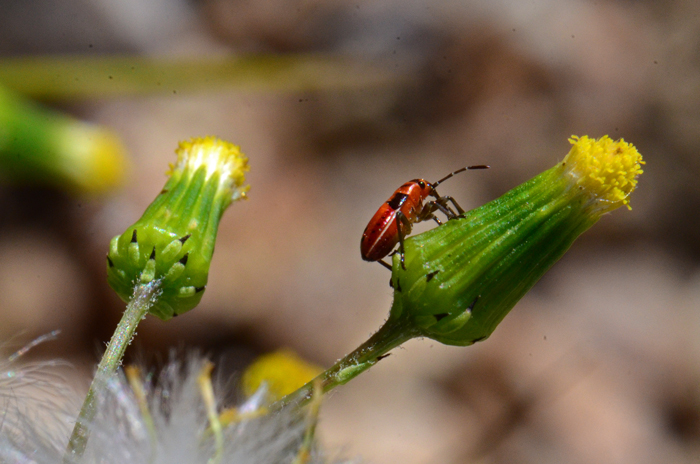
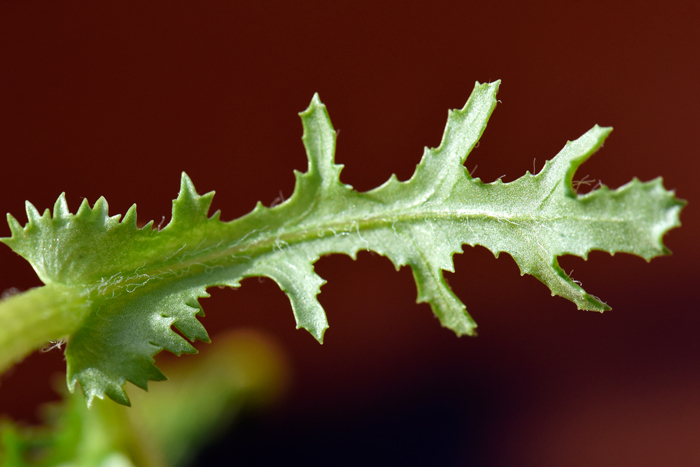
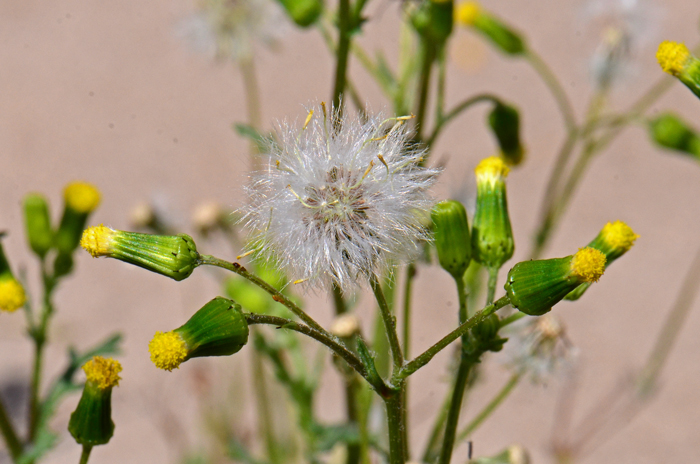
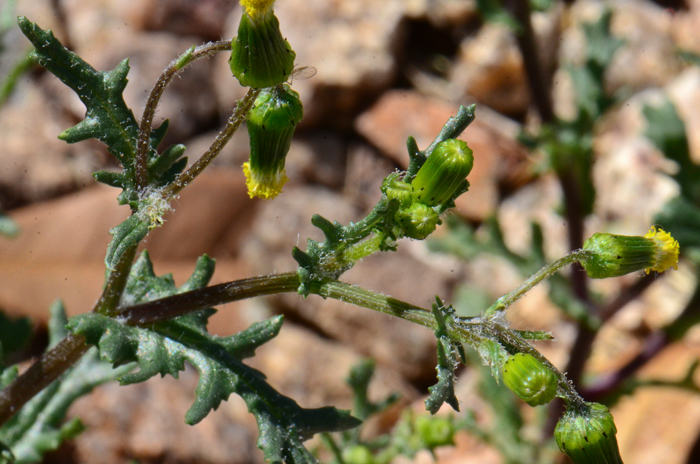
Scientific Name: Senecio vulgaris
Common Name: Common Groundsel
Also Called: Old-Man-In-The-Spring
Family: Asteraceae, Sunflower Family
Synonyms: ()
Status: Introduced and naturalized from Eurasia.
Duration: Annual, biennial from a shallow taproot.
Size: 8 to 20 inches (20-50 cm) or more
Growth Form: Forb/herb; plants may have 1 or more stems; without hair (glabrous) or slightly hairy; unevenly covered in dense, soft short hairs (tomentose) when young.
Leaves: Green; blade shape ovate to oblanceolate; edges or margins with lobes or teeth; upper (distal) leaves without stalk (petiole); leaves arranged alternately along stem.
Flower Color: Yellow; flower heads 8 or 10 to 20 or more clusters; disk florets; bracts surrounding flower heads (phyllaries) with extra set of black-tipped bracts (calyculi); fruit is a smooth or slightly hairy (dandelion-like plume) cypsela.
Flowering Season: February to July or later in cooler climes.
Elevation: Up to 4,000 feet (1,219 m)
Habitat Preferences: Grows as a weed in disturbed areas; ruderale areas, irrigated areas, farm lands.
Recorded Range: Common Groundsel is a common weed, a ruderale species found throughout all of North America, Europe and Asia.
North America & US County Distribution Map for Senecio vulgaris.
North America species range map for Common Groundsel, Senecio vulgaris:
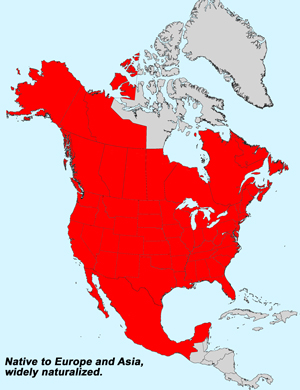
U.S. Weed Information: In North America name can be weedy or invasive according to the following authoritative sources:
Plants included here may become weedy or invasive.
U.S. Invasive/Noxious Weed Information: In North America Senecio vulgaris is listed as a Noxious Weed by the federal government and/or a State;
Plants included here are invasive or noxious.
International Invasive/Noxious Weed Information: *CABI, and *The Invasive Species Compendium (ISC) has identified Senecio vulgaris is listed as an “Invasive Species, Pest, Natural Enemy and Host Plant”. This species is a host plant the Cineraria leaf rust and for the fungus (Thielaviopsis basicola) that causes black root rot in fruits and vegetables.
*CABI is The Centre for Agriculture and Bioscience International (CABI), Wallingford, Oxfordshire, England; The US Department of Agriculture is a lead partner with CABI.
*ISC is The Invasive Species Compendium (ISC) is an encyclopedic resource that brings together a wide range of different types of science-based information to support decision-making in invasive species management worldwide.
U.S. Wetland Indicator: In North America Senecio vulgaris has the following wetland designations:
FACU = Facultative Upland, usually occur in non-wetlands, but may occur in wetlands
UPL = Obligate Upland, almost never occur in wetlands
U. S. Threatened/Endangered Information: Unknown Genus Information: In North America there are 71 species for Senecio. Worldwide, The Plant List includes 1,587 accepted species names and a further 871 scientific names of infraspecific rank for Senecio.
The genus Senecio was published in 1753 by Carl Linnaeus, (1707-1778).
In the Southwestern United States: Arizona has 13 species of Senecio, California has 25 species, Nevada has 15 species, New Mexico has 22 species, Texas has 9 species, Utah has 18 species. Data approximate and subject to revision.
Comments: Common Groundsel is a weed that spreads rapidly because of its ability to develop hundreds or several thousands of wind-borne seeds per plant and they may have 3 or more generations per season. According to the University of California, Common Groundsel was also one of the first weed species to have populations develop resistance to some common agricultural herbicides.
The genus Senecio is known to contain alkaloids which may cause irreversible liver damage and possibly death. It is poisonous to cattle and horses and toxic to humans.
In Southwest Desert Flora also see Lemmon's Ragwort, Senecio lemmonii, Threadleaf Ragwort, Senecio flaccidus var. flaccidus, Smooth Threadleaf Ragwort, Senecio flaccidus var. monoensis and Threadleaf Groundsel, Senecio flaccidus.
The genus Senecio was published in 1753 by Carl Linnaeus, (1707-1778).
The species epithet “vulgaris” (vulgar'is:) means lacking good taste, vulgar and common.
The taxon Senecio vulgaris was published in 1753 by Carl Linnaeus, (1707-1778).

